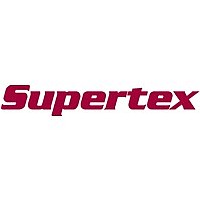HV9989K6-G Supertex, HV9989K6-G Datasheet - Page 6

HV9989K6-G
Manufacturer Part Number
HV9989K6-G
Description
LED Lighting Drivers 3 CH CCM/DCM BOOST LED DRIVER
Manufacturer
Supertex
Datasheet
1.HV9989K6-G.pdf
(12 pages)
Specifications of HV9989K6-G
Rohs
yes
Input Voltage
10 V to 40 V
Maximum Supply Current
4.5 mA
Maximum Operating Temperature
+ 85 C
Mounting Style
SMD/SMT
Package / Case
QFN-40
Minimum Operating Temperature
0 C
Power Dissipation
4000 mW
Functional Description
Power Topology
The HV9989 is a three-channel, switch mode converter LED
driver designed to control a continuous conduction mode
boost or SEPIC converter in a constant frequency mode.
The IC includes an internal linear regulator, which operates
from 10 to 40V input voltages. The IC can also be powered
directly using the VDD pins and bypassing the internal linear
regulator. The IC includes features typically required in LED
drivers like open LED protection, output short circuit protec-
tion, linear and PWM dimming, programmable input current
limiting and accurate control of the LED current. A high cur-
rent gate drive output enables the controller to be used in
high power converters. The IC is ideally suited for backlight
applications using either RGB or multi-channel white LED
configurations.
Power Supply to the IC (VIN, VDD, VDD1-3)
The HV9989 can be powered directly from its VIN pin that
takes a voltage up to 40V. When a voltage is applied at the
VIN pin, the HV9989 tries to maintain a constant 7.75V (typ)
at the VDD pin. The regulator also has a built in under-volt-
age lockout which shuts off the IC if the voltage at the VDD
pin falls below the UVLO threshold. By connecting this VDD
pin to the individual VDD pins of the three channels, the
internal regulator can be used to power all three channels
in the IC.
In case the internal regulator is not utilized, an external pow-
er supply (7 - 9V) can be used to power the IC. In this case,
the power supply is directly connected to the VDD pins and
the VIN pin is left unconnected.
All four VDD pins must be bypassed by a low ESR capaci-
tor (≥0.1µF) to provide a low impedance path for the high
frequency current of the output gate driver. These capaci-
tors must be referenced to the individual grounds for proper
noise rejection (see Layout Guidelines section for more in-
formation). Also, in all cases, the four VDD pins must be con-
nected together externally.
The input current drawn from the external power supply (or
VIN pin) is a sum of the 4mA current drawn by the all the
internal circuitry (for all three channels) and the current drawn
by the gate drivers (which in turn depends on the switching
frequency and the gate charge of the external FET).
Doc.# DSFP-HV9989
C010913
I
IN
= 4mA + (Q
G1
+ Q
G2
+ Q
G3
) • f
S
6
In the above equation, f
converters and Q
FETs (which can be obtained from the FET datasheets).
The EN pin is a TTL compatible input used to disable the IC.
Pulling the EN pin to GND will shut down the IC and reduce
the quiescent current drawn by the IC to be less than 500μA.
If the enable function is not required, the EN pin can be con-
nected to VDD.
Clock Input (CLK)
The switching frequency of the converters are set by using
a TTL compatible square wave input at the CLK pin. The
switching frequencies of the three converters will be 1/12th
the frequency of the external clock.
Current Sense (CS1-3)
The current sense input is used to sense the source current
of the switching FET. The CS input of the HV9989 includes
a built in 100ns (minimum) blanking time to prevent spurious
turn off due to the initial current spike when the FET turns on.
The IC includes an internal resistor divider network, which
steps down the voltage at the COMP pins by a factor of 12
(including the internal diode drop). This stepped-down volt-
age is given to one of the comparators as the current refer-
ence.
It is recommended that the sense resistor R
as to provide about 250mV current sense signal.
Slope Compensation
For continuous conduction mode converters operating in the
constant frequency mode, slope compensation becomes
necessary to ensure stability of the peak current mode con-
troller, if the operating duty cycle is greater than 0.5. Choos-
ing a slope compensation which is one half of the down
slope of the inductor current ensures that the converter will
be stable for all duty cycles.
Slope compensation in the HV9989 can be programmed by
a single resistor at SC input common for all three channels.
Assuming a down slope of DS (A/ms) for the inductor cur-
rent, the SC resistor can be computed as:
where R
Control of the LED Current
The LED currents in the HV9989 are controlled in a closed-
R
CS
SC
is the current sense resistor at the CS
=
DS • 10
2 • (V
G1-3
are the gate charges of the external
6
DD
• R
S
- ΔV
is the switching frequency of the
CS
C
SC
SC(EFF)
)
≈
Supertex inc.
DS • R
www.supertex.com
CS
11μV
CS
be chosen so
HV9989
C
X
SC(EFF)
inputs.












